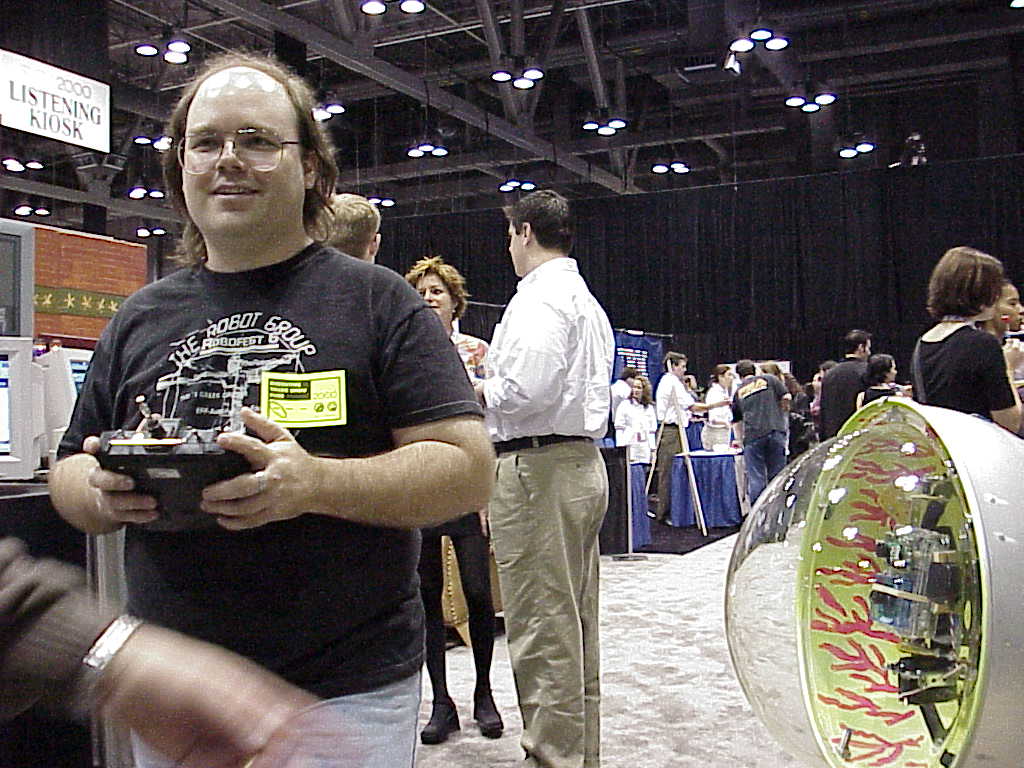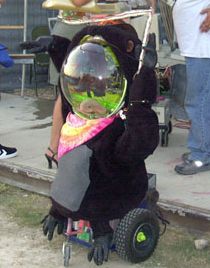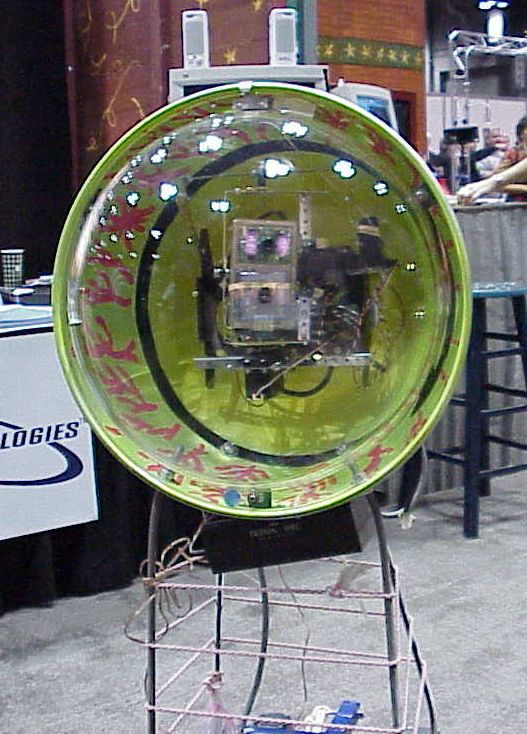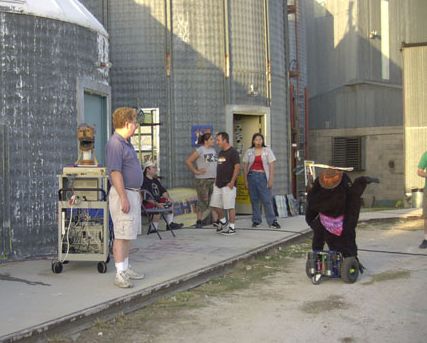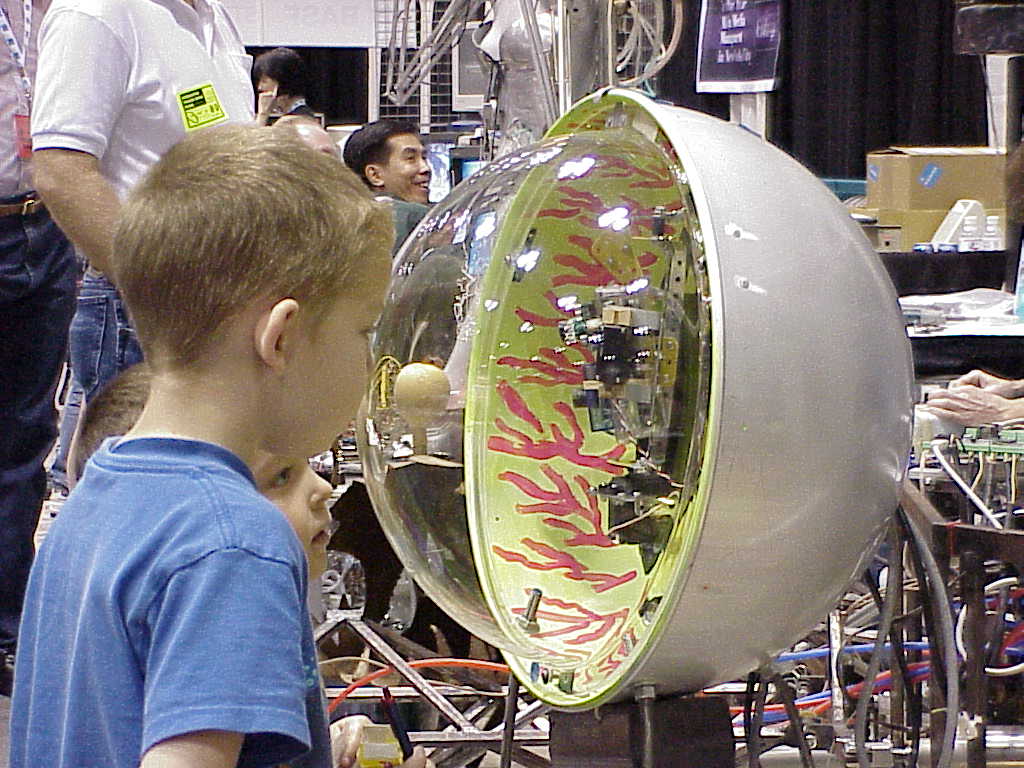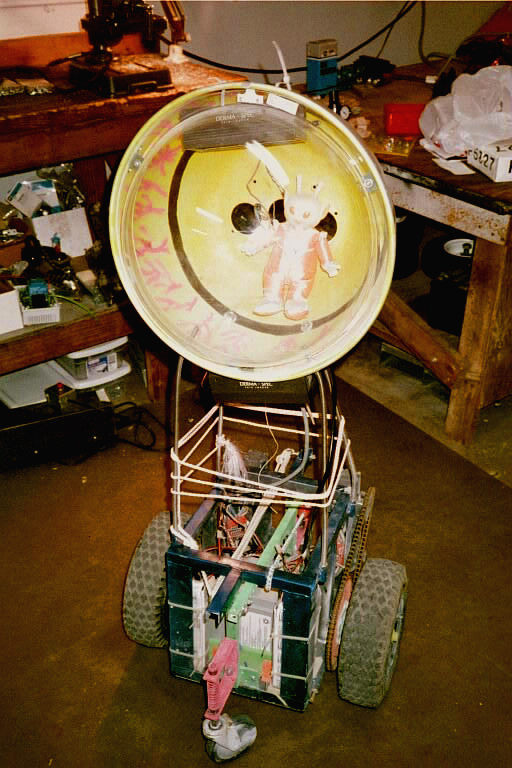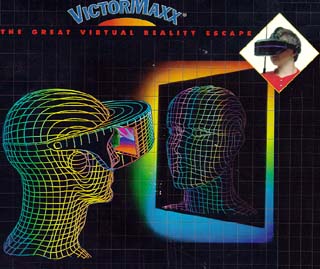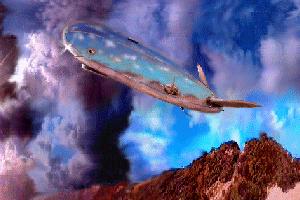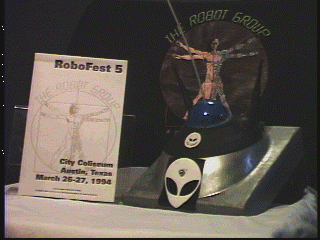Inspired by Bill Barker’s Schwa drawings this little bot was designed, by Tom Davidson and Sonia Santana, for RoboFest 5’s Robot Sumou Tournament.
The Robot Sumou Tournament was inspired by the wildly popular robotic competitions in Japan. The official Robot Sumou have very strict design rules. The object of the competition is very simple – push the opponent out of the playing field circle.
The rules of the sumou robot competition are as follows :
- The area of the base of the robot can not exceed 20cm by 20cm before the game starts. This means that the height is not limited and it may spread after the competition starts.
- The weight of the bot can not exceed 3 kg.
- Use of internal/external combustion (ignition) engine is prohibited.
- Intention to harm the opponent or the Dohyou (playground which includes the competition circle) is prohibited.
- The way to control the bot is free, but divided into two categories – Radio Controlled and Stand Alone.
The Stay Awake Sumou robot was designed from a Blackfoot Radio Controlled (RC) truck motor and RC transmitter. These were its most expensive parts and replacement cost for the RC vehicle is estimated at $200.00.
Hobby tires were purchased for the back end and Lego tires were used in the front. Lego bridge pieces were used to design a front-end steering drive using servos.
The 20 cm x 20 cm requirement made it pretty difficult to put very much in the bot’s base. Everything inside the shell is pretty tightly packed, including a six cell battery gel pack.
The exterior wedge design was chosen for offensive strategy reasons. It seemed, from our research, that a lot of the winning designs in the Japanese competitions were wedge-shaped. The wedge shape prevented the ‘bot from being turned over and, it was hoped, would help the ‘bot get under the competition.
The shell housing is a roof ceiling exhaust duct that was hacked down to the size requirements. The rough edges were smoothed out by filing and the old reliable standby, duct tape, was used to cover the base edges. Cost of the shell was about $5.00.
The decorative antennae and clear plastic dome on top were pieces bought at garage sales for about $3.00. The dome unit had an array of LCD lights that blinked to make it appear that the Schwa had some thinking process going on. It also provided the area for the RC antennae to come out.
The Schwa symbol stickers were purchased from the Schwa Survival Kit by Bill Barker that was distributed by the late, great FringeWare. The bumper sticker on the backside which covers most of the back area says “Whatever Happens Do Not React!”
Kids loved the ‘bot and many wanted their very own.
Since the motor driving the Blackfoot truck is pretty beefy, the Schwa Stay Awake ‘bot was very fast. Our hope was that, once it got in the ring for the competition, it would be able to flee any opponent and be fast enough to react quickly to any threat.
That was true for the most part. The difficulty came in the realization that our motor had insufficient power to push its opponent out of the ring. It would engage the opponent maneuvering quickly to take the side-attack approach.
The winning robot however, had quite a bit of mass and was almost immovable by Schwa. The winner, a Vadim Konradi design, had a very strong wheel chair motor.
It was a doomed competition from the start, a tortoise and the hare type match-up. Vadim’s sumou ‘bot was slower but steady in its determination. Schwa could run circles around him but did not have enough real power to push him out of the arena. It became a matter of time : batteries would drain or time limits would kick-in.
Realizing that it could not win, Schwa surrendered itself to its more powerful opponent and the Konradi ‘bot steadily pushed it out of the ring.
The Stay Awake ‘bot was not fazed however; it quickly resumed its duties entertaining the kids in the crowd who delighted in running after the funny looking RC ‘bot.
